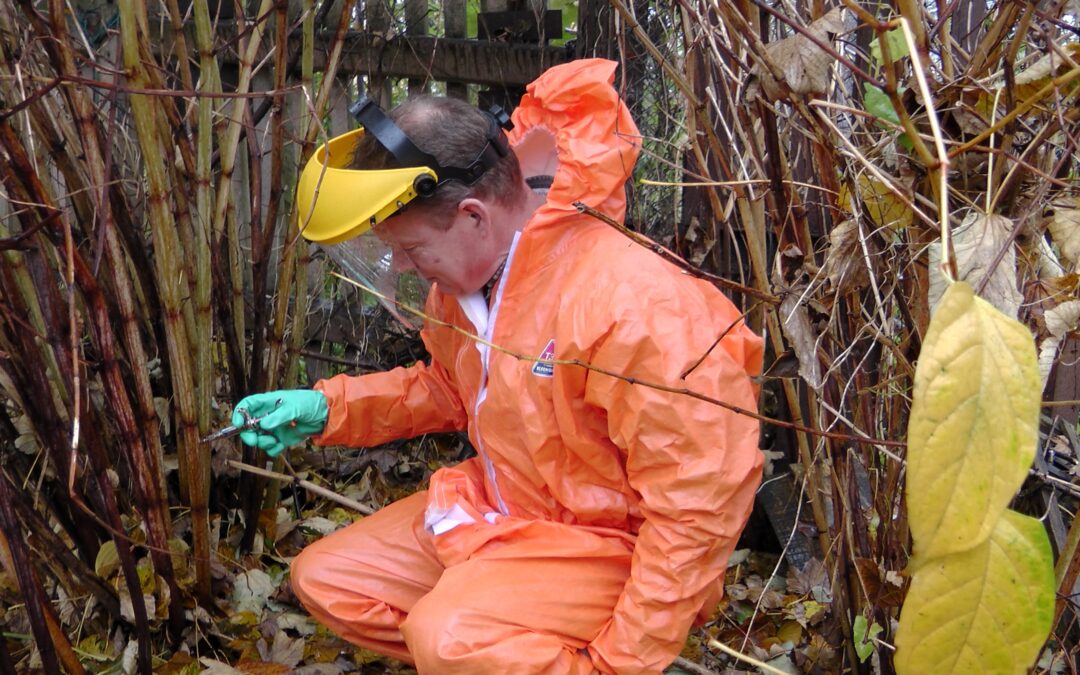Should I Worry About Japanese Knotweed?
Yes — Japanese knotweed is a serious concern for property owners and gardeners. Therefore, understanding its risks and taking timely action is crucial.
Why You Should Worry About Japanese Knotweed
Invasiveness
Japanese knotweed is highly invasive. In fact, it outcompetes native plants, disrupting natural ecosystems and reducing biodiversity.
Damage to Infrastructure
Moreover, the plant’s strong roots can grow through concrete, tarmac, and other structures, ultimately causing costly damage to buildings, walls, and roads.
Rapid Spread
Additionally, Japanese knotweed spreads rapidly through its rhizomes (underground stems). Even worse, small fragments can establish new infestations with ease.
Impact on Property Values
Consequently, properties with Japanese knotweed often experience a decline in value. Furthermore, its presence can complicate mortgage approvals and make the sale process more difficult.
Legal Issues
Additionally, it is illegal to plant Japanese knotweed in the wild. As a result, you could be held liable if it spreads from your property.
Take Action Quickly
If you discover Japanese knotweed on your property, act immediately. The longer you wait, the harder it becomes to control. While small infestations may be manageable, larger ones typically require the expertise of professionals. Ultimately, early intervention prevents further damage and limits legal complications.
How to Stop Japanese Knotweed from Spreading
1. Early Detection and Response
First and foremost, identify Japanese knotweed promptly. Then, take action to prevent its spread to new areas.
2. Herbicide Treatments
Next, use professional-grade herbicides for adequate control. Be sure to consult an expert to determine the best herbicide and the most effective application method. Ideally, apply treatments during active growth (spring to early summer).
3. Cutting and Digging
Alternatively, you can cut aboveground growth multiple times per season. However, be thorough — obliterate rhizomes to prevent regrowth. Importantly, dispose of all plant material properly to prevent the spread.
4. Root Barriers
Additionally, install rhizome barriers at least 2–3 metres deep. This helps contain the spread of roots effectively.
5. Covering and Smothering
Another option is to use non-permeable materials, such as plastic, to block sunlight. Similarly, smothering the plant with mulch can inhibit growth.
6. Monitoring and Maintenance
After treatment, inspect treated areas regularly for new shoots. If necessary, address regrowth promptly to maintain control.
7. Professional Assistance
Finally, seek help from specialists with experience in Japanese knotweed management. Always adhere to local regulations to ensure proper disposal of waste.
Selling a Property with Japanese Knotweed
If you are selling a property with Japanese knotweed, don’t panic. Instead, follow these steps to mitigate buyer concerns:
Professional Survey
To begin with, hire a PCA-accredited surveyor to assess the infestation. Then, obtain a detailed report outlining the extent and severity of the problem.
Management Plan
Based on the findings, develop a comprehensive treatment plan that includes herbicide applications and regular monitoring.
Documentation
Afterwards, provide buyers with survey reports and treatment plans. This level of transparency reassures buyers and simplifies the sale process.
Insurance-Backed Guarantee (IBG)
Furthermore, secure an IBG for your treatment plan. This offers additional assurance that the issue is being professionally managed.
Open Communication
Finally, discuss the steps you’ve taken with potential buyers. By doing so, you show commitment to resolving the issue effectively.
Five-Year Treatment Plan for Japanese Knotweed
A long-term treatment plan ensures effective management of the condition. Here’s how it typically works:
Year 1
Begin herbicide treatments during the growing season. Focus on targeting the roots to weaken the plant’s vigour. Additionally, provide an IBG for added reassurance.
Years 2–4
Continue to apply herbicides annually. During this period, monitor the site for regrowth and address new shoots promptly.
Year 5
Finally, evaluate the effectiveness of the treatments. If the infestation is under control, transition to ongoing maintenance.
Documentation and Certification
Throughout the process, maintain detailed records of all actions taken. Then, obtain certification of success and, if possible, proof of eradication.
Delaying action inevitably increases the risk of higher costs if the plant spreads. By contrast, taking proactive steps protects your property, ensures compliance with legal requirements, and preserves its value.
For more information or expert help with Japanese knotweed, contact Stephen at 07753 682333.
Click the button below to check out my Google reviews.
